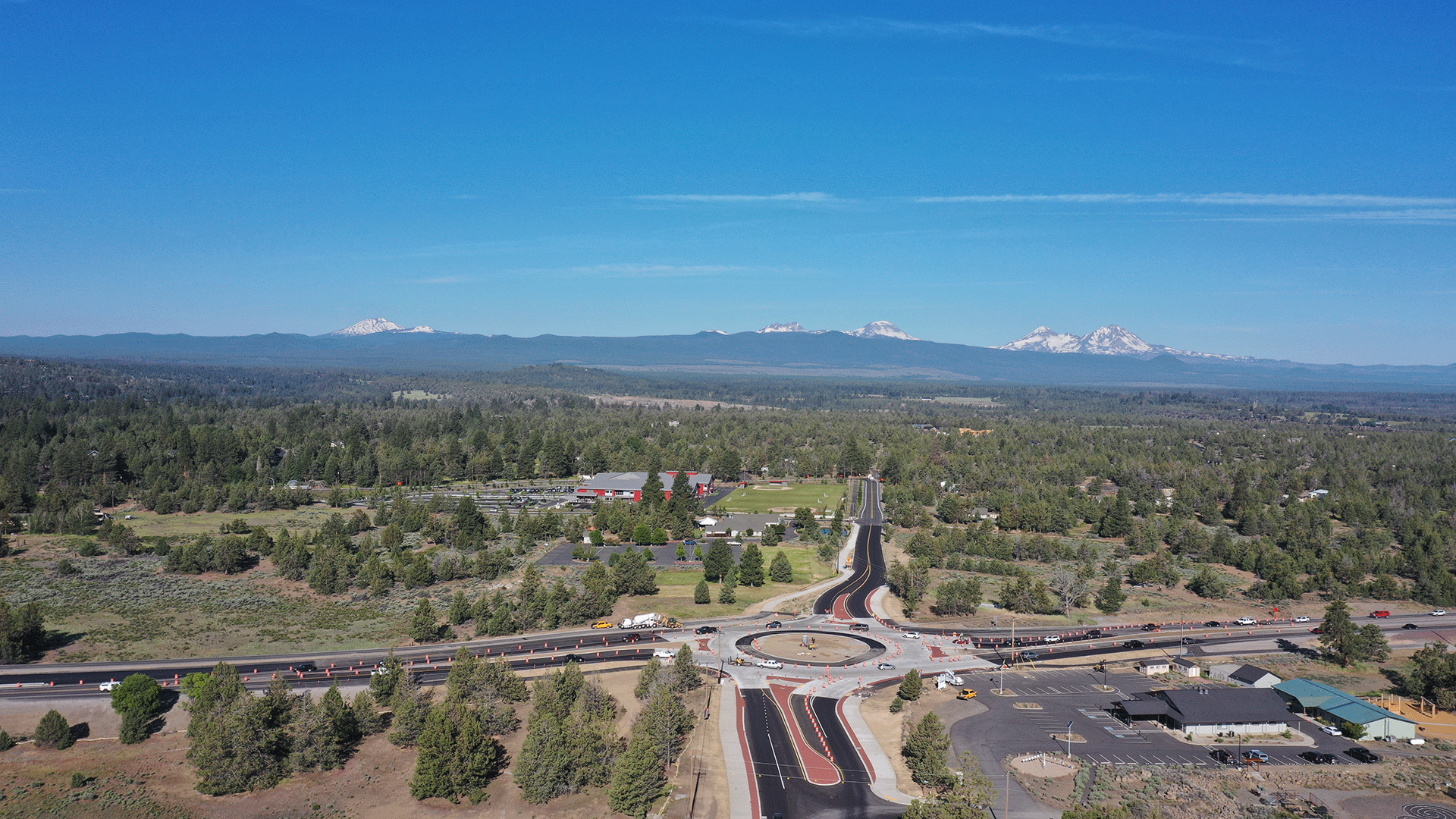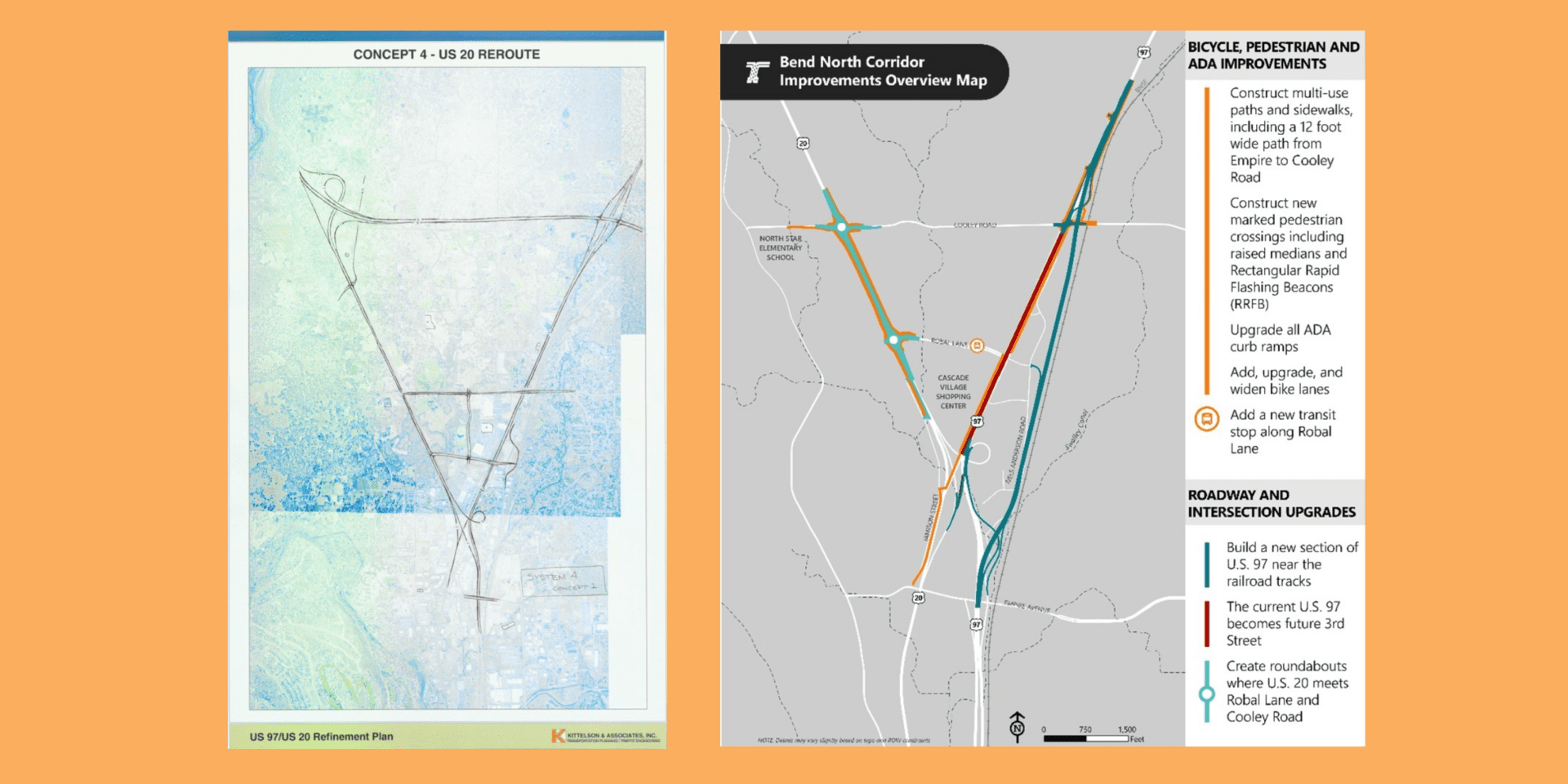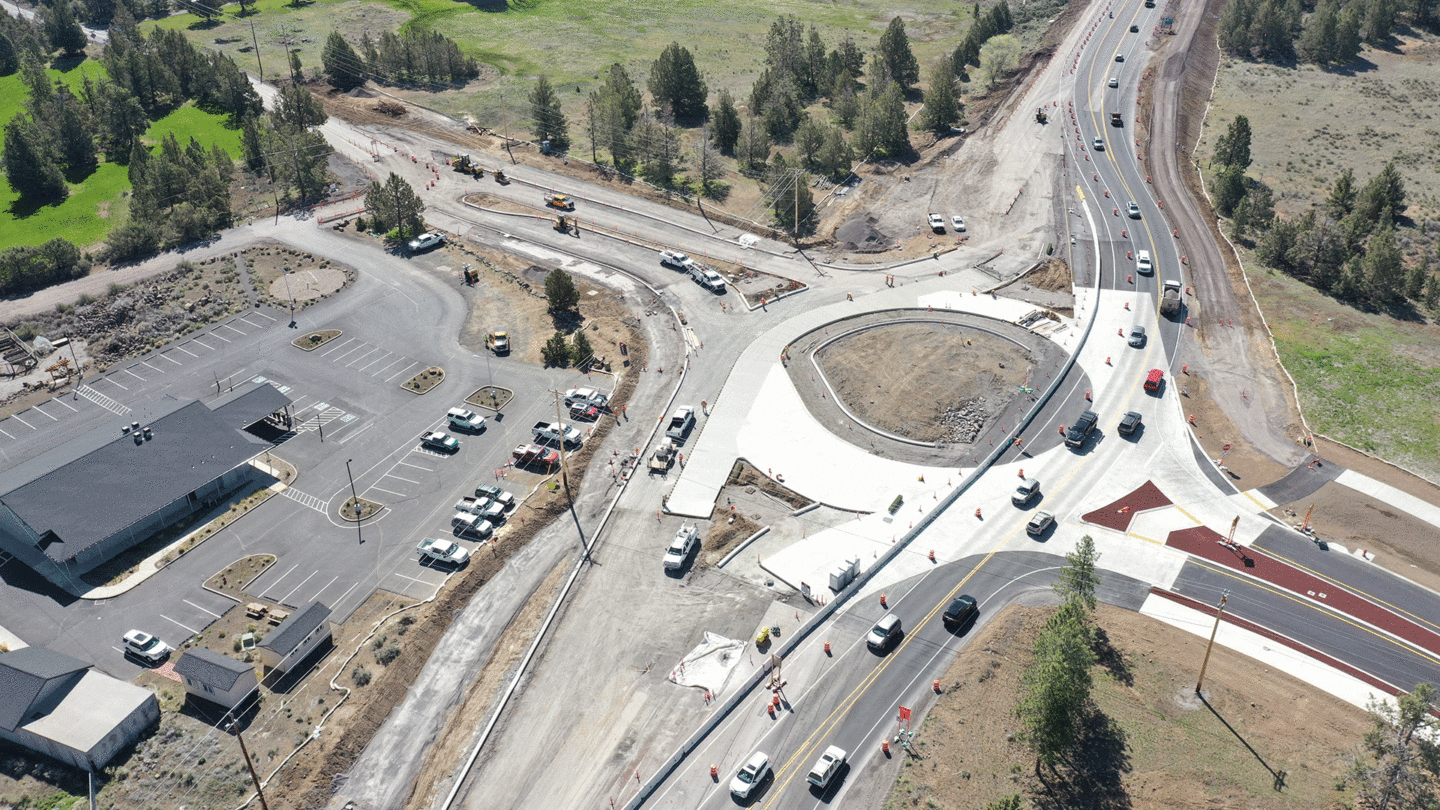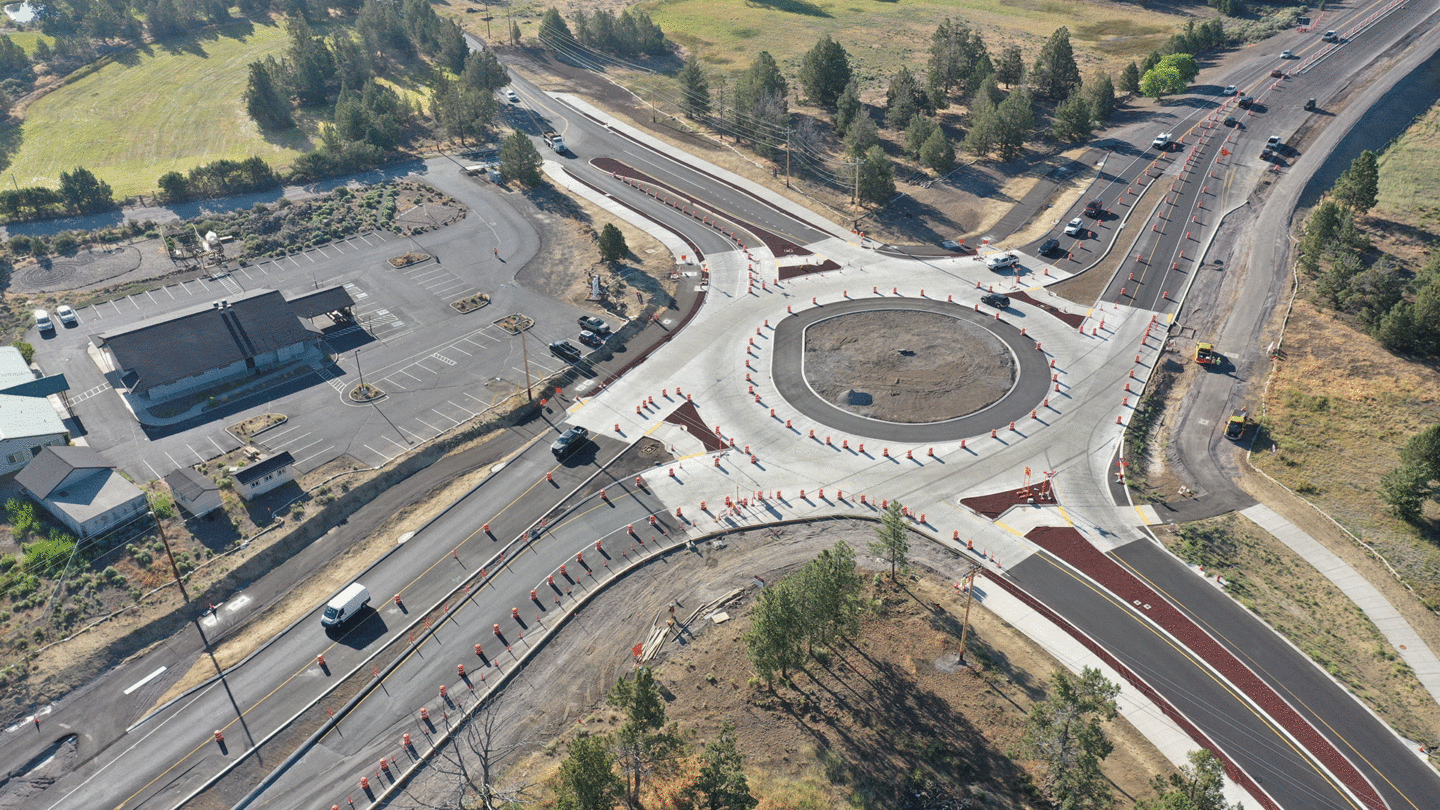July 12, 2023
When Oregon Department of Transportation (ODOT) received federal funding for the Bend North Corridor project in 2019, they decided-for the first time in many years-to use an alternative project delivery method to meet the specific timeline needs of the grant.

U.S 20 is a primary east-west highway in Central Oregon. ODOT opted to use the design-build method to expedite the design and construction of a large number of improvements on this corridor.
Jumping Back into Design-Build
The traditional construction project delivery method that ODOT, and many other agencies, typically use and trust is the design-bid-build method. Design-bid-build involves the completion of three distinct phases-construction does not begin until the design process is complete and a contractor bid is accepted. Design-bid-build offers opportunities for fair bidding, insists on transparency of costs up front, and allows the designer and contractor to play to their strengths. It has been the go-to approach for decades for a reason. However, projects tend to take longer to complete with the design-bid-build method and it lends itself to potential challenges with construction implementation.
Design-build is an alternative delivery method to design-bid-build in which the agency develops a preliminary design concept, and a contractor and designer team are then selected to work together to complete the design and construct the project. The design-build method can shorten the project timeline and allow for more innovation.
ODOT opted to use the design-build method for the Bend North Corridor project in order to expedite the design and construction of a large number of improvements. To reduce risk, ODOT spent substantial time developing the contract beforehand, which paved the way for a successful outcome.
Kittelson was excited to be a part of the design-build team selected by ODOT. The team is led by Kiewit Infrastructure West with design support from Kiewit Infrastructure Engineering, Jacobs, and other key design partners.
History of the Corridor
Central Oregon has seen significant population growth over the last two decades, causing increased traffic on routes that help people get through town and connect to shopping, dining, businesses, schools, and recreation. With U.S. 97 being the main north-south highway through Central Oregon and U.S. 20 being a primary east-west highway in Oregon, the Bend North Corridor project will realign and improve the most congested portions and make the corridor safer for motor vehicles, pedestrians, and bicyclists.
The original concepts for this project were created by hand sketches nearly 20 years ago when the first U.S. 97/U.S. 20 refinement plan was initiated. We worked with Joel Leisch as a senior expert to create six concepts, and one of those concepts from 2006 is what the current project is based on. Our firm’s history working on the corridor has helped us be a key partner to ODOT and the design-build team today. And although it’s common for a project to span this amount of time from initial planning phases to implementation, “seeing a solution come to fruition after two decades is particularly exciting,” according to Sonia Daleiden, senior principal engineer who worked on the initial concepts.

Left: original hand drawings of concepts for the corridor. Right: a map of improvements being implemented as part of the Bend North Corridor project.
The North Corridor Project Today
The range of transportation improvements that ODOT is implementing as part of the Bend North Corridor project include:
- Realigning U.S. 97 to eliminate signalized intersections and streamline traffic flow
- Constructing multi-use path and sidewalks
- Constructing new pedestrian crossings, including raised medians and Rectangular Rapid Flashing Beacons
- Updating ADA curb ramps
- Widening and upgrading current bike lanes and adding new bike lanes
- Adding an additional transit stop
- Adding roundabouts to ease challenging congestion points and improve safety
- Upgrading existing signalized intersections
- Implementing a quiet railroad grade crossing (i.e. no train horns)
Given the number of improvements and the speed at which they need to be completed, this project has required immense coordination, innovation, and a wide range of skillsets. Because it’s a design-build project, Kittelson’s role has been both collaborative during design and supportive during construction. When challenges arise-such as finding a utility line directly underneath where a streetlight was to be added-we’re able to work directly with the construction team and provide alternative solutions to ODOT that fit their needs. This differs from design-bid-build projects, where the designs are sent off to construction, and issues can take longer to remedy.
For one of our senior engineers, Jon Gerlach, the most interesting and challenging part of working on this project is the roundabouts. “Typically with a design-bid-build, our work would be done before the project got sent to construction,” he said. “But with these roundabouts, the process is more fluid.”
Jon was part of the team that had to figure out how the roundabouts were going to be built while traffic was going through that area at all times. “We were designing the two roundabouts while also responding to comments. The construction team would get out into the field and discover something that wasn’t supposed to be there, so they would come to us and say, ‘We need a solution in the next 6 hours before the concrete truck shows up.'”

U.S. 20/Cooley Road roundabout construction on May 12th, 2023.

U.S. 20/Cooley Road roundabout construction on June 30th, 2023.
Building a Modern System to Help Central Oregon Thrive
The unique challenges and the magnitude of this design-build project have undoubtedly highlighted Kittelson’s “one firm” philosophy. From our nearly 20 years of history working on intersections along the corridor to the multiple design packages that all impact each other, and the speed at which everything needs to be completed-it’s been a collaborative effort that has called on the strengths and skillsets of Kittelson team members across the firm. We’ve been proud to serve as a partner to ODOT and the design-build team in finding innovative ways to deliver an impactful project for Central Oregon.
The first major element of the Bend North Corridor project, the U.S. 20/Cooley Road roundabout, is now open and operational. The remaining construction is ongoing and is scheduled to be completed by late 2024. Once complete, these improvements will bring safety benefits to users of all modes along this congested stretch of highway. To learn more about the project, reach out to Scott Beaird.
